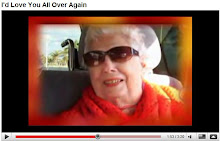
Henry, a 75-year-old widower, had been living alone for the past 20 years. When he started exhibiting signs of dementia, his daughter Pam, 32, suggested he move in with her. Perhaps she was genuinely concerned that he needed help with daily living, but as she later admitted, she also
saw an opportunity to greatly improve her standard of living.
Pam coerced her father into granting her
power-of-attorney and quickly took advantage of the situation. During the following two weeks, she withdrew $500 each day out of his checking account—the maximum allowed using an ATM card—soon bringing the
account balance to zero. She bought jewelry, designer clothing and electronic entertainment equipment, justifying what she did by telling herself that this money would eventually be hers by inheritance anyway. Besides, Dad had been a lot of trouble in recent years, so she
deserved the money. Pam knew she was putting her wants over her father’s needs, but she also knew she
could get away with it. She did have power-of-attorney, and she could do what she wanted with his money as long as no one else found out about it. She
made sure that the few relatives who called once in a while to ask about her father
didn’t get to talk to him and that he
didn’t get their phone messages.
Rather than pay for the care Henry needed, Pam came up with her own solution. She tied her father onto the toilet and kept him there for several days at a time, to the point that he developed sores on his buttocks and became so dehydrated and sick that he was dying. Finally Pam felt she had no choice but to take her father to the hospital.
Although the names were changed by the social worker who related this appalling account, Henry and Pam’s story is very real. And it is just one example of a disturbing reality in today’s society—a growing problem that
occurs daily in almost every community on the planet.
Perhaps an even bigger factor is that the problem traditionally has been
hidden from public view...In fact, many experts agree that the
reported number of
cases represents only the
tip of the
iceberg. More often than not, the perpetrator of the abuse is a family member, which is why the majority of cases go
unreported.According to a 1998 National Elder Abuse Incidence Study funded by the Administration on Aging, in 90 percent of known cases of elder abuse and neglect, the perpetrators were
family members.“If you don’t see the older population as valuable, viable and worthy, then the next step is that you start to show that disrespect,” says Lee Stones, a gerontologist.
DOING SOMETHING ABOUT IT
What can we do as a society to curb the problem of elder abuse? The first step is education. “We need to get to the point where
everybody knows what elder abuse is and is aware that
it exists,”
Podnieks states. “
The more we talk about it, the more real it becomes and the more people are
shocked by it, and then the more committed we as a society are going to be to doing something about it,” she says.
Eliminating elder abuse will take a commitment on the part of people everywhere....
“We need to be each other’s keeper,” she urges. “Elder abuse is not a private matter... Be willing to get involved.
After all, that could be any one of us just a few years down the road.” Until authorities start to treat elder financial abuse as a criminal matter as opposed to a 'civil matter' expect Elder Abuse Cases to skyrocket as our population gets older.
Bold lettering and picture mine for emphasis...abridged

















No comments:
Post a Comment